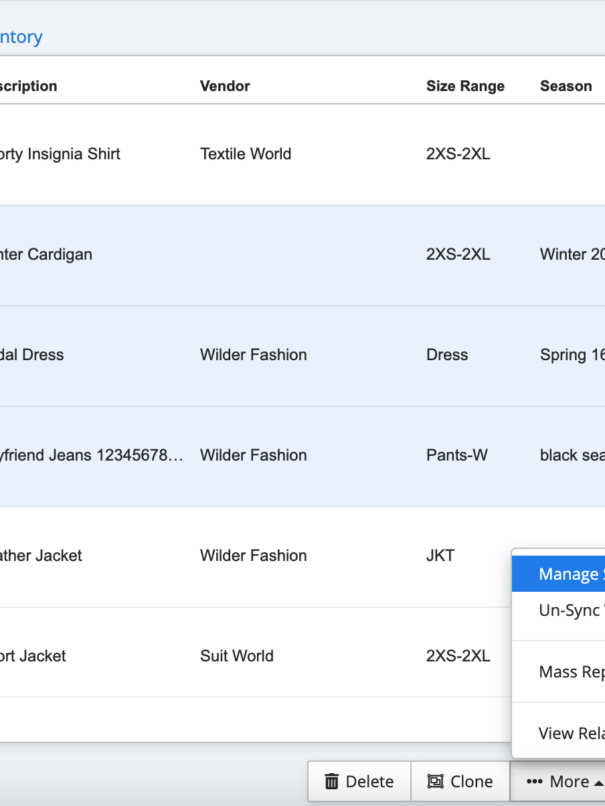There are a lot of moving parts when it comes to managing the flow of goods and services needed to make your business function. How well—or how poorly—you manage those moving parts can make or break your brand in today’s competitive landscape.
While effective supply chain management is crucial for any business, this is particularly true for those of us in the apparel industry. Between fast-changing fashion trends and a limitless variety of products, apparel and fashion retailers often have more complex supply chains than other industries. That’s why it’s important to understand each facet of it in order to manage it properly.
Using the right apparel inventory management software can help you optimize and take control of your supply chain, control costs and manage vendors and deadlines in one place.
Stages of the Apparel Supply Chain
- Design – Before a piece of clothing is ever created, all aspects of it must be designed and planned for, from the silhouette to material to embellishments.
- Textile Production – Raw and synthetic materials must first be spun, woven, blended, or dyed before they can be turned into the clothing on shelves in stores. This stage of the process also produces the highest emissions and pollutants due to the water and chemicals needed.
- Apparel Production – Clothing production is taking the fabric from step two and cutting, piecing, and sewing it into the product designed in step one.
- Distribution – Every company is different, but from step three a garment will either be sent directly to retail or shipped to a distribution warehouse, often shared by multiple major retailers. The movement of a garment within a distribution warehouse is digitally tracked every step of the way to maintain accurate supply records.
- Purchase – Finally, the end user purchases the garment from a retail or wholesale channel.
Apparel Supply Chain Variants
How your supply chain is configured is ultimately a function of market demand and inventory considerations. There are essentially three variants:
Push Supply Chains
In a push supply chain model, analysts project demand for your item and push them to retailers based on their predictions. Cold weather apparel begins appearing in stores as warm weather ends and suppliers have been preparing for this increased demand long before it was present.
Pull Supply Chains
A pull strategy is one that waits for demand to be present before creating the product, which decreases the cost of holding inventory that may not sell. The risk in this strategy is not being prepared when demand ramps up and not meeting consumer needs.
Push/Pull Supply Chains
A compromise between these two is also available. A producer may choose to keep finished products at a distribution center waiting for consumer demand, or a manufacturer may choose to keep a large store of raw materials waiting for the demand for future production.
Challenges of the Apparel Supply Chain
There are several key challenges facing effective apparel supply chain management. Often, many of these difficulties are relevant only to fashion retailers and are not present in the supply chain for other industries and businesses.
- A looming trade war has made sourcing executives wary about future demand, which is compounded by the increase in production and sourcing costs from tariffs imposed on Chinese products.
- Human rights and labor abuses in overseas manufacturing is leading to calls for increased transparency in production
- Demand forecasting in the apparel industry is difficult and can make effective supply chain management difficult, too.
- Although software is a game-changer in today’s business environment, inventory management poses challenges to supply chain management in the apparel industry.
The Future Development of the Apparel Supply Chain
It’s difficult to say exactly what the future holds for the apparel supply chain. Fashion retailers need to figure out new strategies for apparel inventory management, as well as supply chain management.
Retailers will likely continue to look for ways to address those common challenges, incorporate more helpful technology into the process, and address larger issues in the fashion industry, such as sustainability. Meanwhile, consumers are increasingly looking for guilt-free, cruelty-free products. Meeting this demand will be crucial.
As always, it’s important to look for ways to improve the apparel supply chain and make it more efficient, not only for your business, but for the industry as a whole.







